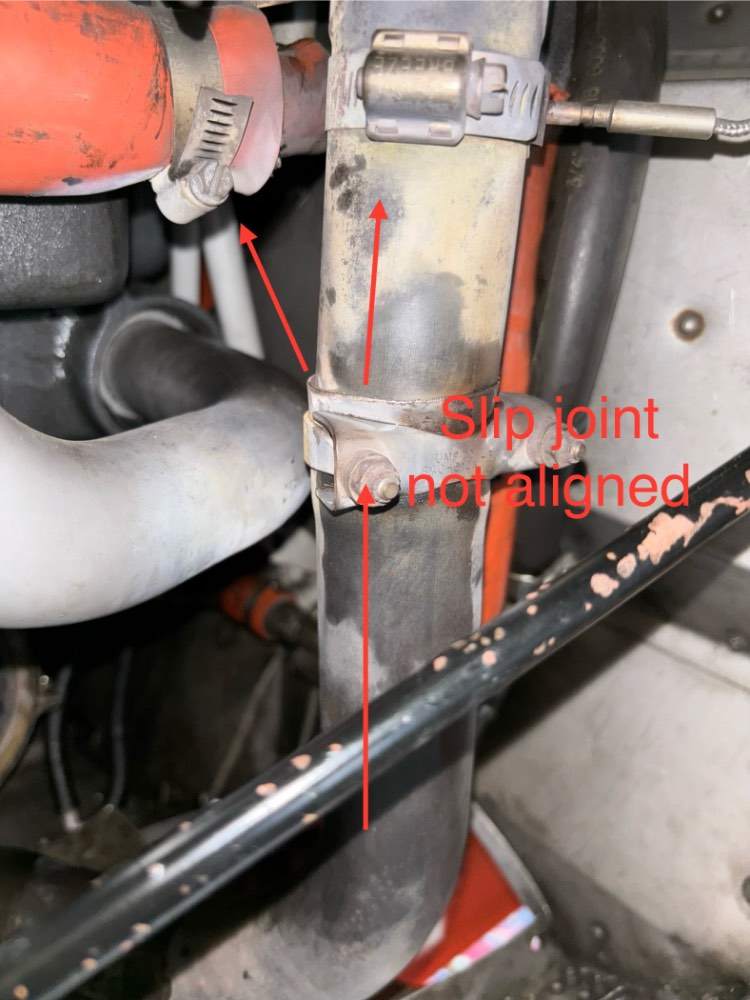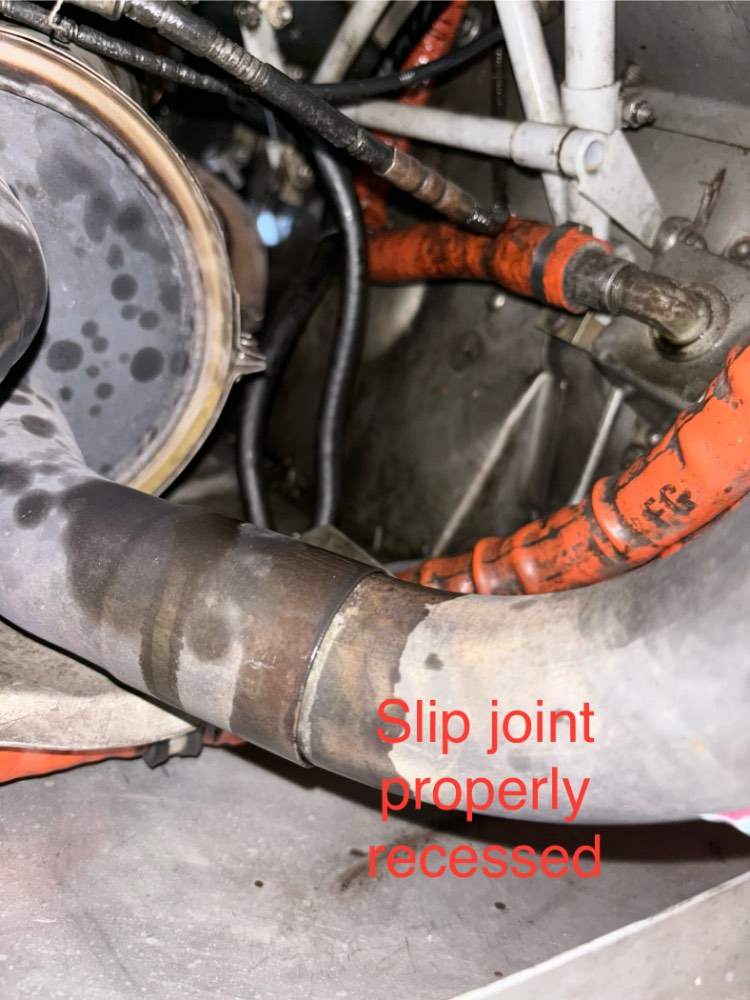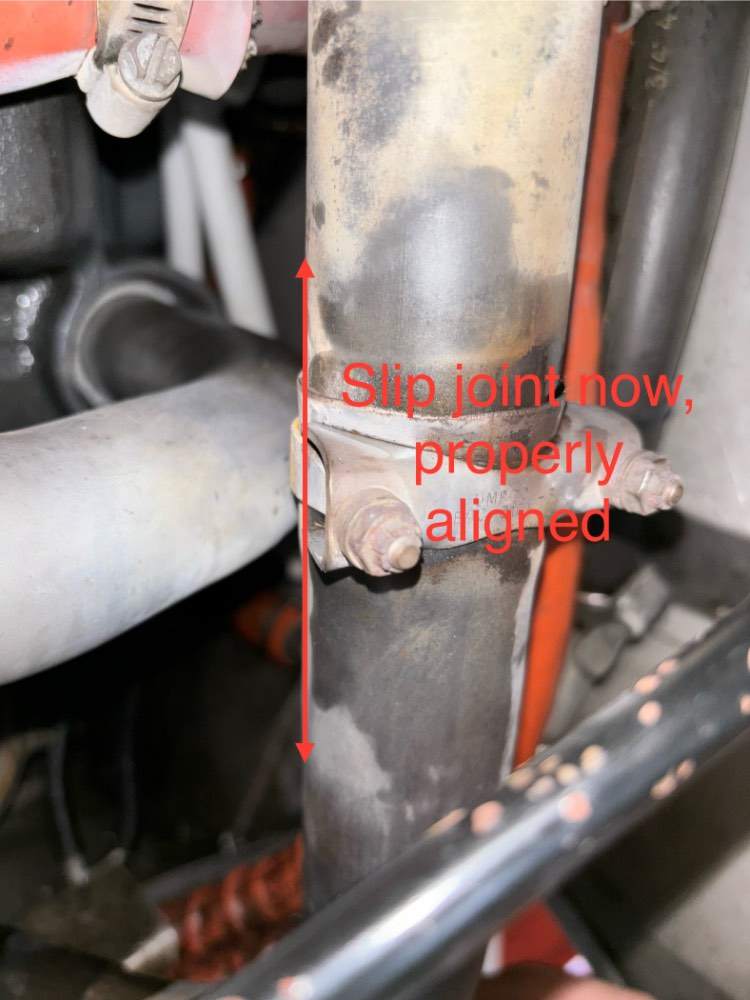-
Posts
11,926 -
Joined
-
Last visited
-
Days Won
163
Content Type
Profiles
Forums
Blogs
Gallery
Downloads
Media Demo
Events
Everything posted by Shadrach
-
I don’t think that it cuts ROC that much. However, Vy and Vx are much lower with the gear down. I can climb at >1000fpm with the gear out, but to do so I must pitch for ~85MIAS. Lots of reasons to avoid operating that way. High drag, high AOA, minimal margin above stall, poor cooling. My experiments were strictly a myth busting exercise brought about by other Mooney pilots claiming that the plane climbs poorly with the gear down. I found a copy of the AFM for the M20D on SCRIBD (thanks Sven) that says the flowing: So Vy for a D model at gross is 93MIAS…so that tracks with my experience of 85ish for my F with the gear down at around 2100lbs.
-

Stuck Fuel Tank Access Covers
Shadrach replied to Zippy_Bird's topic in Vintage Mooneys (pre-J models)
I don’t think there’s any way to do it without some marring of the mating surfaces but the paint can be protected. I would buy a cheap metal 1 1/2” putty knife and grind the corners off so it’s rounded. Then grind the edge sharp. Try to slowly work the blade in one spot. Once through slowly cut your way around the access plate. -
Indeed. A few cups of mineral spirits goes a very long way.
-
I use a solvent spray wand like the one below (available at a number of retailers) with mineral spirits. I can change the air/solvent mixture as needed. There are areas of the empennage that are hard to get to and sheet metal laps that hold dirt, grass and all matter of organic crud. A precise application of solvent and air will clear these areas and allow for everything to be flushed clean and then dried with compressed air. It's funny, but I spend more time cleaning areas inside of my plane that no one but my IA and I see than I do the outside.
-
I just redressed and re routed my JPI harness while adding a transducer line, it really isn't that big of a deal to reroute...maybe a few hours.
-
While I have no doubt that YOU could move the pins on the connector, it is intimidating for someone that's never done it. Also, if his JPI is as much of a PITA to get to as mine, I would be seeking any other alternative. It would be nice if the allowed you to program the read out to the connector of your choice.
-
That is impressive but not out of the realm of possibility. A 1.5lb delta could in and of itself be attributed to dirt and oil residue. I thoroughly clean out the wing roots, fuselage and empenage every year at annual. I bet there have been years where I have pulled over a pound of oily crud out of the airframe.
-

High climb CHT on cylinder #4
Shadrach replied to Shadrach's topic in Vintage Mooneys (pre-J models)
Interesting that Mooney recommends C5A Anti seize (copper based with graphite) but Mcfarlane says that graphite will corrode and destroy the grain structure of 321 stainless. Is it fact or is it marketing???...my guess is that the exhaust is not so fragile that graphite will do much damage.. -

High climb CHT on cylinder #4
Shadrach replied to Shadrach's topic in Vintage Mooneys (pre-J models)
My slip joints also exhibit a bit of staining from leakage but the the stains on the fire sleeve are new. I am going to clean everything thoroughly. Exhaust stains are more tenacious on bare metal than on the painted belly skins. I am going to try to find some factory guidance on the clamp position and torque. Stripping the threads would be an expensive mistake. -

High climb CHT on cylinder #4
Shadrach replied to Shadrach's topic in Vintage Mooneys (pre-J models)
This is where my limited understanding of metallurgy comes into play. How does one reduce the diameter of a steel pipe with a saddle clamp? I’ve used exhaust clamps in a number of automotive applications, but in those situations, the outer pipe is notched to allow the outer pipe compress around the inner pipe. The outer pipe is not notched in this application. It seems to me the threads on the clamp would strip before the pipe compressed in any significant way. Perhaps the clamp. is designed to deform the outer pipe? FYI, while that clamp might look like a standard automotive part, it retails for about $300. Grateful to have an extra one on the shelf. -
so the long and short of this is that Skip’s analysis was correct and this could’ve been resolved without removing the actuator and sending it to LASAR?
-

High climb CHT on cylinder #4
Shadrach replied to Shadrach's topic in Vintage Mooneys (pre-J models)
I found the issue. The slip joint on the #3 stack is obviously leaking. My partner put nine hours on the airplane and there is now exhaust staining on the exhaust stack and the fire sleeve of the fuel supply line going to the servo. The lower slip joint was not fully recessed in the muffler. This caused the upper slip join to be angled out slightly creating a gap. The lower slip joint was just slightly hung up in the non-recessed position. I was able to easily push it into place and square everything up. This most certainly happened post annual after lubing all of the joints with mouse milk. In the past, I have used anti-seize to lubricate the slip joints. The stack moves freely in the slip joints when the engine is cold. My question surrounds the U shaped clamp on the upper number slip joint. I’ve never really understood its purpose. I always thought it was there to Add structural integrity to the outer sleeve. I haven’t poured through the maintenance manual yet for guidance. It would be helpful if you or anyone else has some advice. I asked the local IA And he thought the clamp was there to hold the joint in place. That seems unlikely to me as the pipe is not slotted, and therefore Not really compressible. muffler is the rib type similar to the one on the J I believe. -
Rich gives good advice above and is very thorough in his instructions. While there is no legal requirement that your mechanic be there for this type of troubleshooting, it’s probably a good idea given it’s your first time doing this. I am not an expert on the Surefly system. I do not know if the switch needs to be in the start position for it to Fire at TDC. If ignition timing is purely driven by RPM, you should be able to do the following with the ignition switch set to the left mag (Surefly). Perhaps someone more familiar with the system can verify. I remove all of the spark plug leads and then remove the top plugs. Remember that you are only testing the Surefly leads. Extend a straight edge from the parting flange of the crank case out to the back of the starter ring. The TDC (0°) mark on the starter ring is for cylinder #1. Verify #1 is on the compression stroke by covering the top spark plug hole with your thumb and cranking the prop through by hand until you feel pressure at the plug hole. With the ignition Switch in the appropriate position (which would be left mag) hold the lead close enough to the cylinder for the spark to jump and move the prop through top dead center. You should see a spark at TDC. Alternatively, you can put a spark plug back on the lead and hold it against the cylinder and look for a spark at the electrode as you move the prop through TDC.
-
I'm not here to argue either. It is a fact, not an opinion that almost any airplane can be flown onto the runway at speeds well above stall speed. They do it frequently in formation landings. "Float" is a function of both excess energy and AOA. It's quite possible to finesse an airframe onto the runway long before it has finished flying. Now for an opinion - personally, I think that in almost all situations it is best practice to deliver the aircraft to the runway in a controlled manner with the least amount of energy possible. It's easier on the equipment and hastens the time spent in the zone where RLOCs typically occur...too fast to have good wheel steering and braking and too slow to have good control surface authority.
-

False Gear Alarm, 68 M20F J Bar Gear
Shadrach replied to Huckster79's topic in Vintage Mooneys (pre-J models)
Yes...indeed as soon as I reached to check the J-Bar (which was still in the floor), the sound of that gear horn loudly remerged front and center in my consciousness. All of the cues regarding what was about to happen flooded into my brain rapidly as I pushed the throttle in gently for the go around. -
I hear the stall horn on almost every landing unless I've mismanaged the approach. At shorter fields, I hear it the moment I begin to arrest the descent as I near the runway environment. There are lots of Mooney pilots that think smoothly flying it on is good technique. I did it once with an instructor several decades ago. After I touched down, he pulled back on the yoke, lifted off, flared and then landed again. He asked me to really try to "actually land" the airplane on the next circuit. That really made an impression.
-
Agreed. When light, I often hit the aft trim stop by short final.
-
@PeterRus I guess it depends on the weight and CG. I personally have never encountered a downward pitch moment on landing unless my sink rate is suboptimal, resulting in the mains arresting the descent rather than airfoils thereby causing the nose to pivot down and around the mains. I never carry power into the flare unless a strong gust causes an uncommanded climb leaving me with low energy several feat above the runway. I'm not saying it's bad technique, I'm just saying that I don't do it. Go out and practice mains only touchdowns. It might take a while to get it right, but it is possible. It will sharpen your touchdown skills (which atrophy over time) I like to practice mains only touch and goes, but they are not for everyone. Mains only touchdown only work at the correct touchdown speed. Even if you pooch the approach speed, the correct touchdown speed can still be attained (if there is sufficient runway) by simply adjusting AOA in ground effect as the speed bleeds off. I've posted this video many times over the years. I leave it here just so you know what it looks like. Note that the nose never touches the ground on either T&G. I was dealing with a 7-9kt x wind that day so the plane weather vanes a bit at times with the nose in the air. There may be something to adding a touch of power...My younger, sillier, self would on occasion add a touch of power after touchdown and wheelie for about 3000' of runway before setting it on the nose before slowing down to turn off.
-
This reads to me like the Surefire ignition module is not delivering spark at the specified timing (TDC at 400rpm and below). Has someone physically verified spark to the plugs at TDC?
-
It would be interesting study to calculate at what DA the turbo planes begin to outperform their NA brethren in terms of runway performance for a given payload and range.
-
Wow…4 gear up landings and a prop strike. Some airplanes are dealt a lousy deck in terms of ownership. Thats a nice looking plane. The damage history would not deter me from buying. The over indulgence in mods for the sake of mods is a bit of a turn off. I would trade a lot of that stuff to have back 150lbs of useful load. That’s barely a 2 person airplane with full fuel.
-

High climb CHT on cylinder #4
Shadrach replied to Shadrach's topic in Vintage Mooneys (pre-J models)
OAT is in the 80s. While these temps are not in the range of what is considered concerning. I know that something has changed #1 and #4 have traditionally been my coolest cylinders. #4 is now the hottest. -

High climb CHT on cylinder #4
Shadrach replied to Shadrach's topic in Vintage Mooneys (pre-J models)
Bayonet. I was planning on using a hairdryer. My partner has the plane right now. The most plausible explanation is that the exhaust stack is leaking and blowing hot gases around the other side of the cylinder. However, the fact that it’s only manifesting in climb is the head scratcher. Cruise CHT in the typical 300-315° range. The issue is only manifesting itself in climb. I don’t think we could climb at Vy and keep #4 CHT under 400°. VX is out of the question. prior to this issue I could climb with the gear down and full flaps at 80 miles an hour and keep it below 350° now it’s at 350° before lift off. The only thing I can think of is that in Cruise, there’s enough airflow to redirect the exhaust leak away from the thermocouple. I’ll know more when I can put eyes on the engine. It’s only been doing this for a few hours, so probably not a lot of exhaust residue to act as a witness mark -

High climb CHT on cylinder #4
Shadrach replied to Shadrach's topic in Vintage Mooneys (pre-J models)
I did that on #3 where the barrel doesn’t have fins. -

High climb CHT on cylinder #4
Shadrach replied to Shadrach's topic in Vintage Mooneys (pre-J models)
I have, but even if they were, the high cht is definitely new regardless of whether the cylinder numbers are incorrect. Although it might explain why removing debris from #3 resulted caused #1 to return to normal. I’ll double check the next time I’m at the drome









